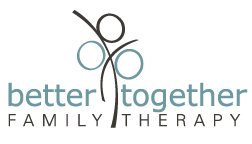Looking for a Therapist? Find out what you’ve already done right and how to help your children do it too.
One of the most important changes you’ll make in therapy starts before you ever meet your therapist. It’s the shift from feeling stuck, trapped, or limited in your power to suddenly thinking “this is something I could change.” Seeking help to make the change shows that you understand there’s work involved and are serious about getting it done. This is where your success starts.
From a sense of self efficacy (the belief that you can influence what happens to you next) comes motivation to do the difficult, emotional work that leads to lasting change. Your therapist will help you hang onto your self efficacy throughout the process by focusing on the aspects of your situation that truly can be changed and help you set goals specific to your role in the situation. (For example “I’d like to ask my partner directly for what I want” or “I’d like to stay confident when someone puts me down” rather than “I’d like my family to be nicer to me.”) If family change is your end goal, coming to couple or family therapy with curiosity about what you yourself could change signals your readiness to grow to your partner and children and sets the stage for them to do the same.
Developing self efficacy in the therapy process can be trickier for children, who most often come to therapy at someone else’s request. Demonstrating your own self efficacy is the first step in helping your children to find theirs. Choosing a therapist who offers play based and expressive therapies ensures that your child will feel confident in his ability to participate in and learn from therapy. Look for a provider whose office is designed to be welcoming to children, with seating and materials they might find in their classroom or playroom. Your family’s therapist should also help you engage your child in the therapy process before and during your first meeting. If he or she doesn’t bring this topic up, don’t hesitate to ask. A provider who works regularly with children will have ideas to share.
To develop your child’s self efficacy at home, shape discussions of events around the aspects the child can change. For example, when your child comes home and says “my friend hurt my feelings today,” give him a chance to tell you more and then ask “what would you like to happen next?” He might say something like “I want him to be nicer.” Follow up with “what do you think you could do to help that happen?” If he isn’t sure “who could help you figure it out?” can help him to recognize adults as resources he uses for help rather than the sole problem solvers in his world. If he wants you to solve the problem for him, ask for guidance about what you should say and to whom, and explore what he thinks the result will be. This keeps the focus on his problem solving process rather than your ability to swoop in and save him. Over time, noticing his own role in solving problems will build confidence and help your child to initiate change when he wants to do so.*
*The self awareness required to monitor our own behavior and make adjustments isn’t fully developed in childhood, so your help is still an important part of your child’s change process. He’s more likely to notice what he can do differently if you help him think through his options and possible results.
